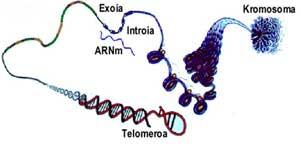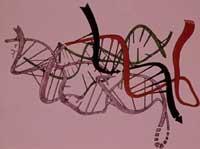One more step in understanding protein synthesis
2002/03/12 Orobengoa, Olatz - Elhuyar Zientziaren Komunikazioa

With this chain will be formed a messenger RNA (RNAm) that will go to the ribosomes and synthesize there the protein.
Numerous genetic errors are manifested by a poor felling of the base, by an excessive cutting or by an excessive cutting. These problems occur when cutting enzymes do not know the limits between intronas and exonas, that is, when mutations occur in intronic borders. It is known that these errors occur. Now, scientists from the International Centre for Biotechnology and Genetic Engineering of Trieste have discovered that mutations in the intrinsic sequence also influence the formation of messenger RNA.
A patient with degenerative nervous system disease known as Ataxia-telangiectasia (A-T) had genetic analyses, in which it was detected that an intriguing gene intron that produces it had 4 bases. The disappearance of four pairs of bases exon this intron and emerged a messenger RNA longer than normal, for having the introna inside. Therefore, the disappearance of these four pairs of bases generated a defective messenger RNA in the cells of this person.
Researchers believe that the four base pairs can be a mechanism to help cutting enzymes know intronas and that there can be other mechanisms like this.

Gai honi buruzko eduki gehiago
Elhuyarrek garatutako teknologia




